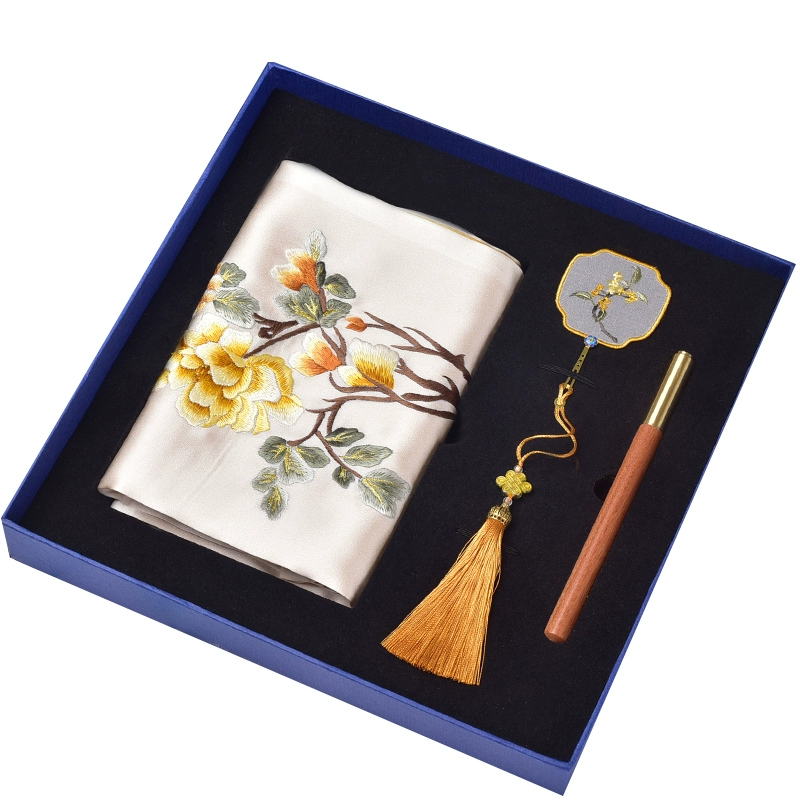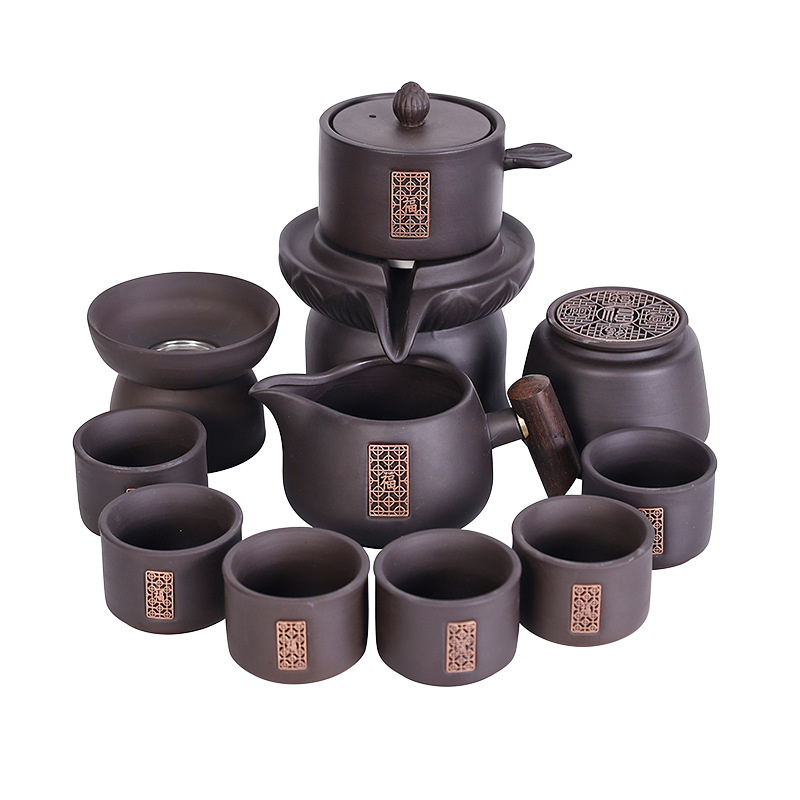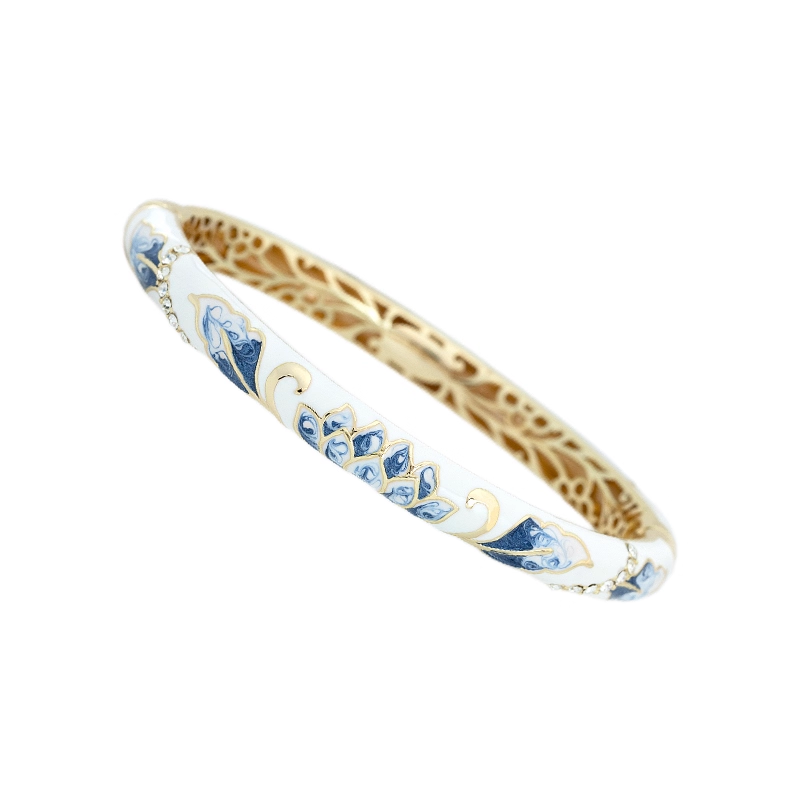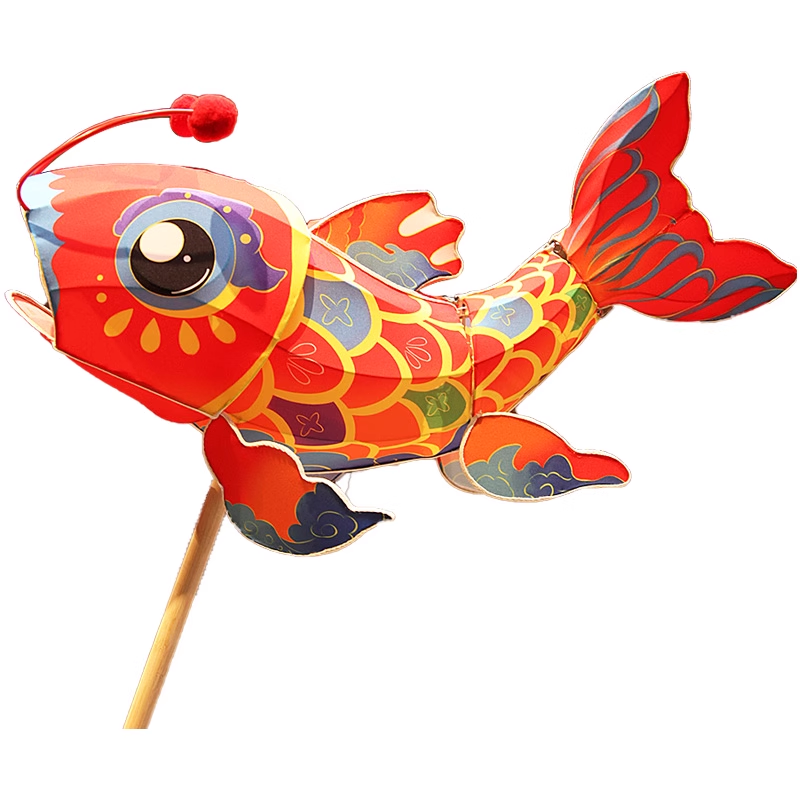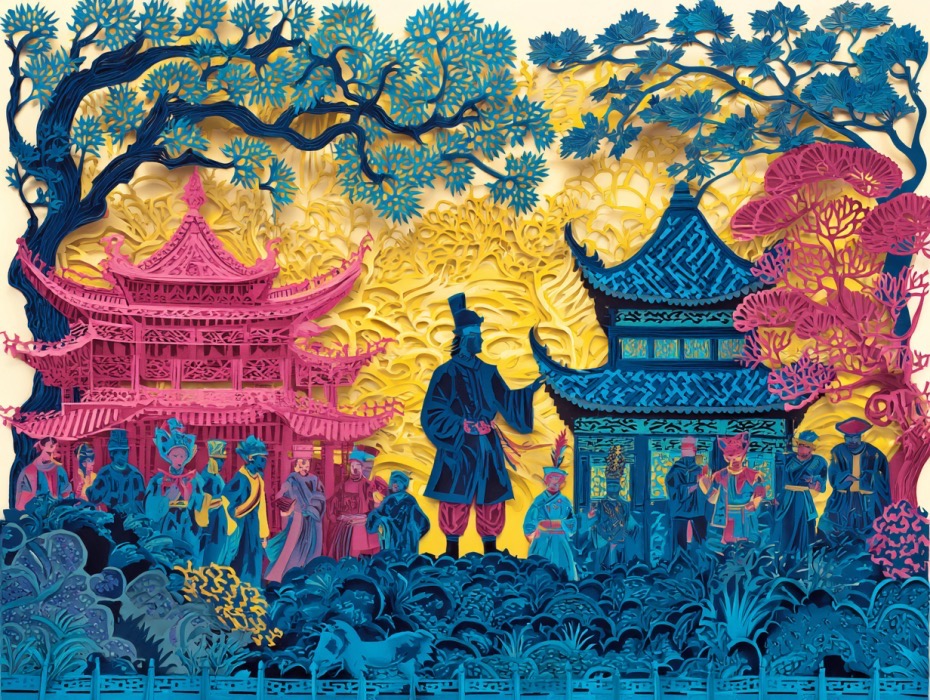Chinese Knots:The Millennium-Old Auspicious Code Woven by Threads
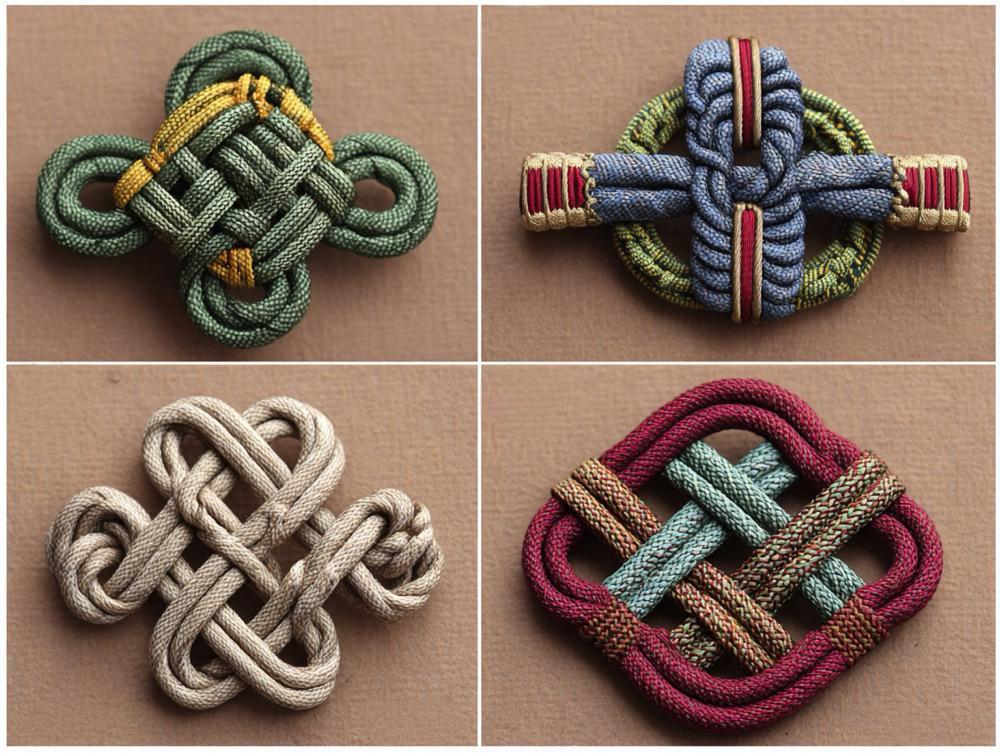
Amid the brilliant galaxy of traditional Chinese crafts, Chinese knots take a simple thread as their carrier. Through the exquisite techniques of winding, knotting, and interlacing, they weave auspicious meanings and Oriental aesthetics that have spanned millennia. This folk art, which deeply integrates practicality with decoration and culture with emotion, was not only a daily item for ancient people to tie things and decorate but also has become an important symbol for spreading China’s “auspicious culture” to the world today. With its plump shape and rich connotations, it has won global admiration.
The history of Chinese knots can be traced back to the ancient era of knot – tying for recording events. At that time, the ancestors had no written language, so they used the size, quantity, and shape of knots to record events and convey information—large knots for major events, small knots for minor ones, and different knot shapes corresponding to different meanings. This was the embryonic form of Chinese knots. During the Spring and Autumn and Warring States Periods, knots gradually transformed from “tools for recording events” to “decorative crafts”. Nobles used exquisite knots to hang jade pendants and weapons, forming the early form of “ribbon knots”. In the Han Dynasty, the “ribbon system” prevailed, and the colors and shapes of ribbon knots for officials of different ranks were different, becoming a symbol of status and etiquette. In the Tang Dynasty, the craftsmanship of Chinese knots became mature. Knots were not only used to decorate clothing and utensils but also integrated into Buddhist and Taoist cultures, deriving knot shapes with religious meanings. The Ming and Qing Dynasties were the heyday of Chinese knots. The shapes of knots became more diverse, and their auspicious meanings became more distinct. From court decorations to folk festivals, from weddings and funerals to daily gifts, Chinese knots were everywhere, becoming one of the most popular “auspicious symbols” among the people.

There are a wide variety of Chinese knots, and each knot shape carries a unique auspicious meaning, forming a cultural system of “one knot, one meaning”. The most classic “Pan Chang Knot” (Endless Knot) has a shape where the thread connects end to end and circulates repeatedly, symbolizing “endless life and long – lasting good fortune and longevity”. It is the most common basic knot in various Chinese knot works. The “Ji Xiang Knot” (Auspicious Knot), also known as the “Eight Treasures Knot”, is woven from eight threads. Its plump shape is like a flower petal, implying “eight auspicious treasures and all wishes come true”, and it is often used in Buddhist utensils and festival decorations. The “Ru Yi Knot” (Ruyi Knot) has a shape similar to the ancient “Ruyi” (a scepter symbolizing good fortune), conveying the beautiful wish of “good luck and the fulfillment of one’s aspirations”, and it is mostly used as a gift pendant. The “Shuang Xi Knot” (Double Happiness Knot) is specially designed for weddings. It is composed of two “Xi” (happiness) character knot shapes, symbolizing “double happiness arriving at the door and a happy marriage”, and it is an essential element in wedding decorations and dowries. In addition, there are the “Ping An Knot” (Safety Knot) symbolizing “peace and smoothness”, the “Zao Jing Knot” (Caisson Knot) implying “steady progress and promotion”, and the “Tuan Jin Knot” (Round Brocade Knot) representing “reunion and perfection”. Different knot shapes can be made into independent works or combined together to form a more abundant expression of auspicious meanings.
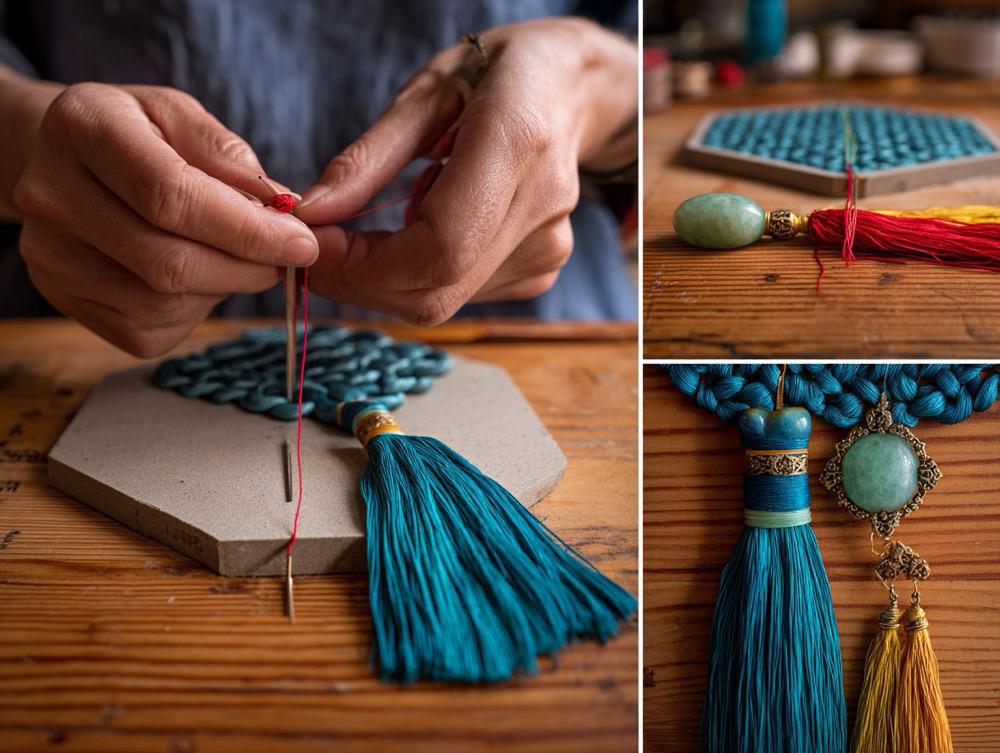
The charm of Chinese knots lies not only in their profound cultural connotations but also in their exquisite and ingenious production process. Behind the seemingly simple knots is the craftsman’s precise control of thread materials, tools, and techniques. Firstly, in terms of thread material selection, traditional Chinese knots mostly use silk threads, cotton threads, or nylon threads that are tough in texture and bright in color. Common colors include Chinese red, bright yellow, and royal blue. Among them, “Chinese red” has become the most classic color matching because it symbolizes “joy and auspiciousness”. Some high – end works also use gold threads and silver threads for weaving to add a luxurious texture. In terms of tools, scissors, lighters (used for fusing the ends of threads), foam boards, and positioning pins (used for fixing the shape of knots) are essential. Craftsmen need to rely on these tools to ensure the symmetry of the knot shape and the smoothness of the threads. The production process is usually divided into four steps: “starting the knot, weaving the knot, finishing the knot, and decorating”. When starting the knot, it is necessary to determine the length of the thread and the center point of the knot shape to ensure the symmetry of the subsequent weaving. Weaving the knot is the most crucial link. Craftsmen need to remember the weaving formulas for different knot shapes and use the techniques of “pressing, picking, threading, and winding” to make the threads interweave in an orderly manner in their hands. Especially for complex combined knots, it often requires dozens or even hundreds of interlacings, and a slight mistake will require re – weaving. When finishing the knot, it is necessary to tighten the threads and adjust the tightness of the knot shape to ensure that the knot is plump and not loose. Finally, according to needs, jade pendants, agates, tassels, and other decorations can be hung under the knot to enhance the aesthetics and cultural charm of the work.
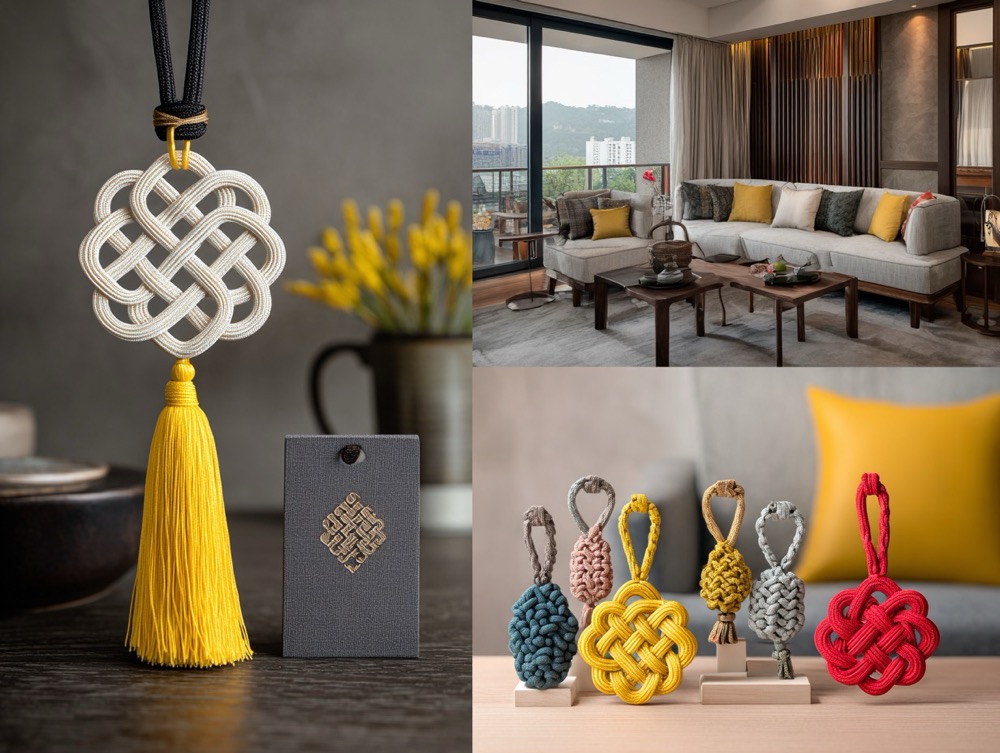
In modern society, Chinese knots have not faded with the changes of the times; instead, they have gained new vitality through innovation. On the one hand, the traditional craftsmanship of Chinese knots has received systematic protection. Intangible cultural heritage inheritors in various places pass on the weaving techniques from generation to generation through methods such as “master – apprentice teaching” and “online teaching”. The holding of various Chinese knot exhibitions and cultural and creative competitions also allows more people to understand this art. On the other hand, Chinese knots are constantly deeply integrated into modern life, the fashion industry, and the cultural and creative field. In the fashion industry, designers integrate Chinese knot elements into clothing and accessories, such as necklaces and bracelets in the shape of Chinese knots, or bags and belts woven with knots, allowing traditional crafts to enter daily wear. In the field of home decoration, products such as Chinese knot pendants, curtain straps, and carpet patterns inject a strong Chinese style into the space. In the cultural and creative field, mini Chinese knot keychains, bookmarks, festival greeting cards, and other products have become popular souvenirs loved by consumers. Especially during traditional festivals such as the Spring Festival and the Mid – Autumn Festival, Chinese knots are a popular choice for conveying blessings. In addition, Chinese knots have repeatedly appeared on the international stage as a “Chinese cultural business card”. From the Chinese knot decorations at the opening ceremony of the Beijing Olympic Games to the cultural activities of Confucius Institutes in various countries, the world has felt the unique charm of Chinese knots, making them “auspicious messengers” that cross national borders.
From the ancient knot – tying for recording events to the auspicious decorations in the Ming and Qing Dynasties, and to the innovative inheritance today, Chinese knots have always used threads as a medium and knots to express meanings, interpreting the Chinese people’s pursuit of a better life with the simplest craftsmanship. They are not only exquisite handicrafts but also vivid historical memories and an endless cultural inheritance. In the new era, with their unique charm, Chinese knots are crossing time, space, and national borders, spreading the millennium – old auspicious code woven by threads to every corner of the world.
